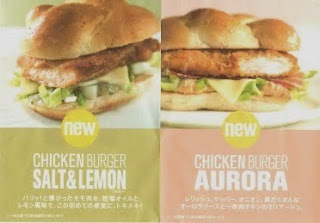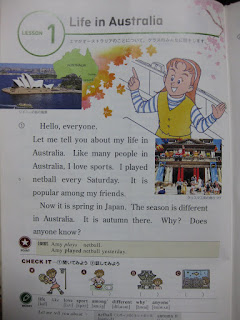Living in Australia we have, admittedly, a fairly small population. Australian media isn't really anything to call home about. Personally I love it but I think it really only caters to, or makes sense to Australians. That's why Kath and Kim didn't work in America, fundamentally it's just not what they want. But because of the language we speak we have access to more media than we can handle. Media is literally being pushed down our various facial orifices (orifi?).
(including our head hole)
Of course as can be expected, Japanese TV will show the news, sports, dramas and so on. But today, it's the 'so on' part that I want to type about. You see, in between the landmines of news or current events there is a gold mine of entertainment. It can generally be broken down into a few subcategories; beginning with ever ubiquitous variety shows. Remember watching ridiculous Japanese game shows on Australia's Funniest Home Videos and the like? They're a bit more modern than that and are usually held on a smaller scale... But it's the same idea.
Take the video below for example; A man must lie on a cart and push it forward to land within 30cm of the woman's breasts. If he is to accidentally ram his face into her bajooba's then he receives an electric shock. Makes sense. Go on, watch.
Variety shows are generally littered with Japanese 'celebrities'. These people, called 'talents' (despite the lack of any), are often famous for some kind of gimmick which can be some kind of catchphrase, a clothing antic or some recognisable bodily feature (weight, teeth, eyebrows etc.). They are famous literally for being famous and generally don't contribute much to the world. Really they are perfect fodder for shows like this which would explain why there is just so many of them.
 (Ayaka Imoto, eyebrows // Haruna Ai, actually a man // Bobby Olegon, black)
(Ayaka Imoto, eyebrows // Haruna Ai, actually a man // Bobby Olegon, black)Above is just a few examples of what one can expect upon turning on the TV. It's sensational. These people don't actually get paid very much and can only afford a mediocre life in Tokyo so obviously the more appearances in various shows the better. This is often accomplished by having them take part in one of the numerous food-related shows available in Japan.
What's odd about Japanese food shows is that they usually don't actually teach you how to cook. They involve various people/talents roaming Japan to discover some kind of new food or technique, then, after discussing it depth, show it and eat it. Japanese people love to exclaim their love of food to such an extent it borders on mockery. There are two primary words in Japanese to describe how tasty something is which essentially equate to 'delicious', and 'yum' - these are shouted in between over exaggerated swallows and looks of surprise by the eatee.
What's odd about Japanese food shows is that they usually don't actually teach you how to cook. They involve various people/talents roaming Japan to discover some kind of new food or technique, then, after discussing it depth, show it and eat it. Japanese people love to exclaim their love of food to such an extent it borders on mockery. There are two primary words in Japanese to describe how tasty something is which essentially equate to 'delicious', and 'yum' - these are shouted in between over exaggerated swallows and looks of surprise by the eatee.

(Although not usually by world's greatest hot dog eater, Takeru Kobayashi)
Finally we change the channel to anime. Japanese animation. Japanimation. Whatever you want to call it, we've all seen it and we all know what it is. I did some research on the beginnings of anime but it's long and boring so I won't bother. What I will tell you is that cartoons such as Pokemon and old school Transformers don't even scratch the surface of this phenomenon.

 (Girls anime // Boys anime)
(Girls anime // Boys anime) (Adult // Slice of Life)
(Adult // Slice of Life) (Mecha // Hobby (music, sport, cooking etc.))
(Mecha // Hobby (music, sport, cooking etc.))All animation appears to fall under these general brackets... except 'Hentai', also known as animated porn. Anime in Japan is usually on quite late at night with most shows starting between 10:00pm to 26:00pm, a fictional time the Japanese people have made up so as to have shows still being on the same night (even though technically the clock has ticked over to the new day). It makes sense that people would be staying up to watch these shows and not waking up to watch them but it's still a little weird, no? I heard that the shows are on so late because they cater more to the 'freaks' (otaku) who watch the shows religiously. I also heard that the most money is made from people buying the merchandise so it makes sense, I guess.
In between these treasure troves of entertainment are the commercials. Often they don't really make sense and it's often quite difficult for me to discern what it is they're trying to sell but some of them are really fun to watch. Take this commercial below, for example.
All of the commercials feature a bean-dog of some kind giving unnecessary trivia to the people about to eat them. The odd thing about these commercials is that they're not actually really advertising anything. Mameshiba, the brand, was created by an advertising agency to simply make up a new brand. Their goal was for the bean-dogs to become famous, and then reap the business opportunities that would come from it. It absolutely worked, too.
Other than cute bean-dogs, Japanese commercials have many more mascots and many more nonsensical campaigns. I remember once watching a movie for 15 minutes with Catherine Zeta Jones only to realise that it was a 15 minute long commercial for shampoo. That's dedication. Throw in some bizarre appearances by people like Brad Pitt (for a phone company), Tommy Lee Jones (for coffee) and Lady Gaga (phones) it can all get pretty surreal.
But that's exactly how I like it.
Next time I'll cast a critical eye onto the goings on in the Japanese music industry. Look out for that one.
Other than cute bean-dogs, Japanese commercials have many more mascots and many more nonsensical campaigns. I remember once watching a movie for 15 minutes with Catherine Zeta Jones only to realise that it was a 15 minute long commercial for shampoo. That's dedication. Throw in some bizarre appearances by people like Brad Pitt (for a phone company), Tommy Lee Jones (for coffee) and Lady Gaga (phones) it can all get pretty surreal.
But that's exactly how I like it.
Next time I'll cast a critical eye onto the goings on in the Japanese music industry. Look out for that one.

















 access the island is by a ferry which takes 2.5 hours from the mainland so the residents don't leave very often. A long time ago it was a place to banish people who were considered 'difficult' or 'inconvenient' by the Japanese emperor of the time. A place where supposed criminals were sent to colonise? Sound familiar?
access the island is by a ferry which takes 2.5 hours from the mainland so the residents don't leave very often. A long time ago it was a place to banish people who were considered 'difficult' or 'inconvenient' by the Japanese emperor of the time. A place where supposed criminals were sent to colonise? Sound familiar?


